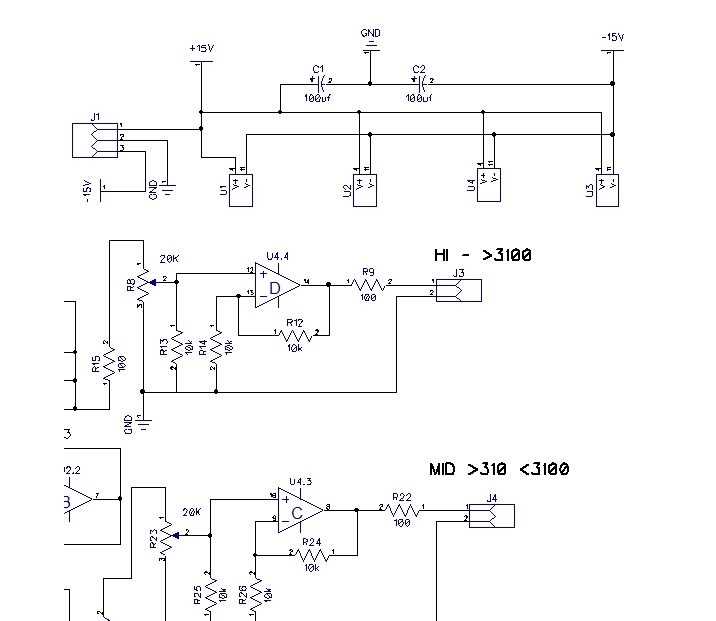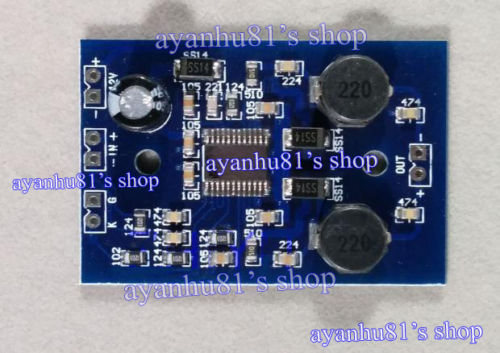I built a 3 WAY CROSSOVER (ELLIOT SOUND CIRCUIT) with +/- 15v supply. I have found small class D amplifier for Mid AND high amplifiers. They are single sided power. Can I simply couple the input through a capacitor and ground? Will signal cause problem when it crosses zero to negative value? the voltages are supplied from a transformer with +/- 38 v and +/-15v bridge rectified and capacitors. Grounds tied together. If a coupling capacitor is the answer, what value would allow suitable hi pass for audio? thanks
 output section of crossover mid and hi shown. Low Frequency goes to an amplifier that is dual supply +/- 38vdc
the amplifier board shown is similar to one in my question, same wiring inputs
Thanks
output section of crossover mid and hi shown. Low Frequency goes to an amplifier that is dual supply +/- 38vdc
the amplifier board shown is similar to one in my question, same wiring inputs
Thanks
-
1\$\begingroup\$ Provide a schematic or diagram, please. Also, a link to the crossover you've built would be helpful. \$\endgroup\$– Enric BlancoCommented Apr 8, 2017 at 18:00
-
1\$\begingroup\$ There is no generic power amp circuit - supply a schematic. \$\endgroup\$– Andy akaCommented Apr 8, 2017 at 18:01
-
\$\begingroup\$ Here is the crossover output section and power supply +/-15v \$\endgroup\$– PaulBKaraokeCommented Apr 8, 2017 at 18:55
-
\$\begingroup\$ This is a project to build a 3 way powered speaker. original test had mid and low amplifiers that use +/- power supply. Wanted to try other amplifier board that has a single supply. \$\endgroup\$– PaulBKaraokeCommented Apr 8, 2017 at 19:09
1 Answer
Yes, a coupling capacitor in-line between the crossover's output & the amplifier's input will "re-center" the signal to the "artificial ground" inside the single-sided amplifier & avoid having problems when the 2-sided input "crosses ground."
The size of capacitor you should use depends on the input impedance of your amplifier. I'd say a cap with <1/2 the input impedance of the amplifier, at the lowest frequency you intend to push through it (i.e. 310hz for mid, and 3.1khz for high) should be sufficient. However, it's a lot harder to "mess up" by using too large a capacitor than by using one that's too small, so when in doubt, use a slightly larger cap.
Here's a link to a "Capacitive Reactance Calculator" ... tell it what frequency & impedance (reactance) you need, and it'll tell you the value of capacitor to get it; then go to your favorite component supplier & buy the next higher value that they have in stock (no need to pay $75 for a 10.2876358uF capacitor if a 11uF is handy for $0.15).
NOTE: DO NOT USE AN ELECTROLYTIC CAPACITOR FOR THIS...make SURE you use a "non-polar" capacitor. Mica, oil-and-paper, film, thin film, or ceramic are all fine...aluminum & tantalum capacitors aren't fine...the polarized/electrolytics can end up depolarizing & cause very unpleasant things to happen when used as coupling capacitors without adding a DC bias to keep them properly polarized at all times.
